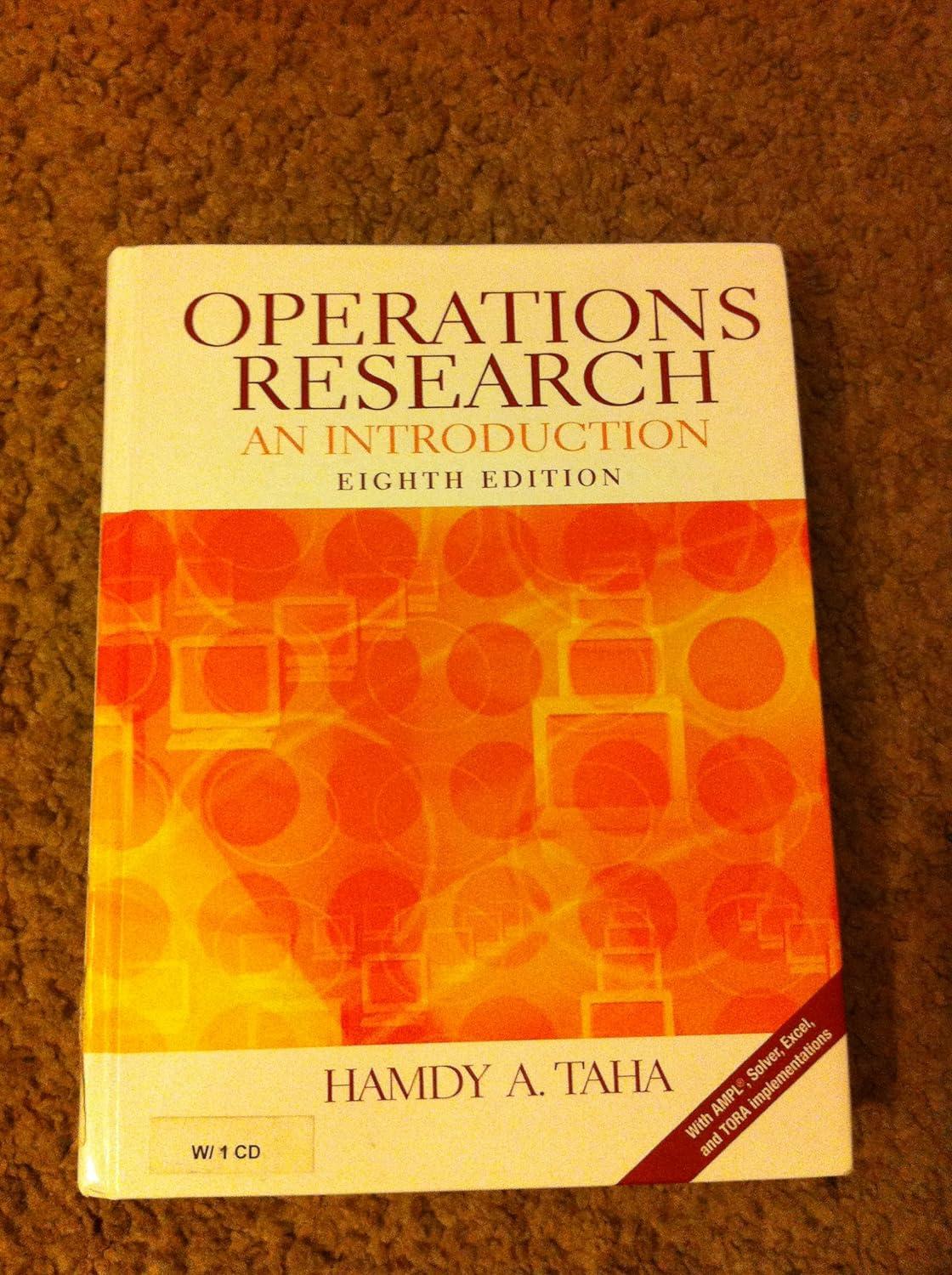7. TORA/Solver/AMPL Experiment. The following problem is designed to demonstrate the bizarre behavior of the B&B algorithm
Question:
7. TORA/Solver/AMPL Experiment. The following problem is designed to demonstrate the bizarre behavior of the B&B algorithm even for small problems. In particular, note how many subproblems are examined before the optimum is found and how many are needed to verify optimality.
Minimize y subject to 2(Xl + x2 + ... + XIS) + Y = 15 All variables are (0, 1)
(a) Use TORA's automated option to show that although the optimum is found after only 9 subproblems, over 25,000 subproblems are examined before optimality is confirmed.
(b) Show that Solver exhibits an experience similar to TORA's. [Note: In Solver, you can watch the change in the number of generated branches (subproblems) at the bottom of the spreadsheet.]
(c) Solve the problem with AMPL and show that the solution is obtained instantly with oMIP simplex iterations and 0 B&B nodes. The reason for this superior performance can only be attributed to preparatory steps performed by AMPL and/or the CPLEX solver prior to solving the problem.
Step by Step Answer:






